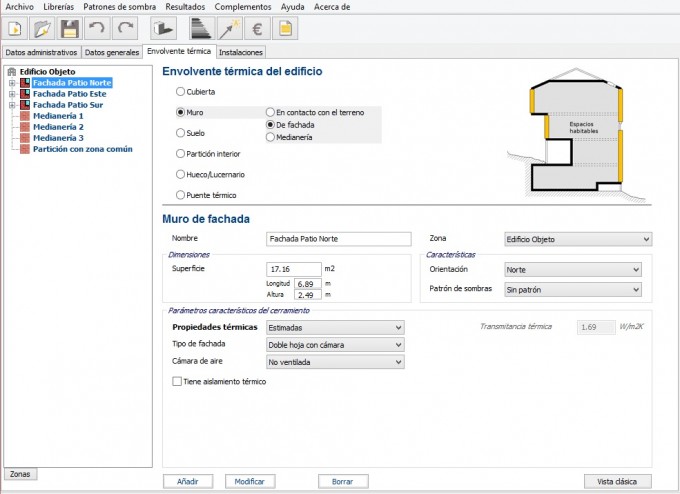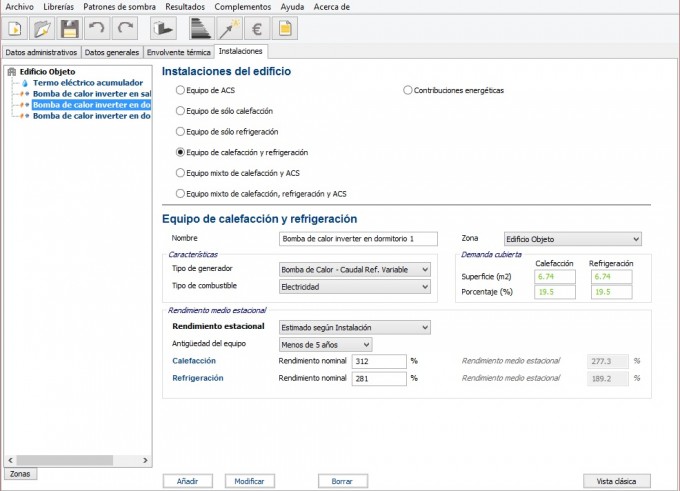-
Phone Number
-
Email Address
In this article we intend to carry out an analysis of how The type of domestic hot water equipment influences the energy qualification with the CE3X program, in the first place we will consider that the most frequently used equipment are instantaneous gas heaters, accumulators electric or diesel or gas boilers , being evident that those that work with electricity are going to penalize them to a greater extent than those that work with another type of energy such as natural gas, butane, propane, etc….
Equally in those equipments that accumulate hot water to be used, even though they are well insulated, they lose the heat and therefore are less efficient as is the case with accumulator electric water heaters.
We are going to make an example in the energy certificate of a house so that we will carry out three assumptions, in the first case we consider a gas instantaneous heater natural, in the second case we will replace it with a thermos instantaneous electrical power and in the third case we consider a electric water heater with accumulation.
Characteristics of the home:
It is an individual house in a block located in second floor, whose year of construction is 1978, with a useful living area of 34.56 m2, located in Valencia capital, this house has a main façade facing north and two facades to an interior patio with east and south orientation.

This house has a thermal envelope made up of three façades, one facing north, and two facing east and south orientation, all three facing the interior patio. The partition with a common area is also considered, as well as the medians of the house or partition walls with other homes.

Content menu:
In this case, the house next to the DHW installation presents a highly efficient air conditioning system with three wall-mounted split units with inverter heat pump covering the demand of the dining room as well as the two bedrooms of the house. These teams are left in the three assumptions that we are going to consider, they are also less than 5 years old old with which they present a seasonal performance very high in heating and cooling.



In this first case, it is considered that the dwelling has of a natural gas instantaneous heater, of a power nominal power of 26.8 Kw and a combustion efficiency of 85%, and we get an E grade.

In this second case, it is considered that the dwelling It has an instantaneous electric heater, with the seasonal yield estimated from the age of the team (between 5 and 10 years), and, despite the fact that we have worsened the rating, we continue to get an E grade.


In this third case, it is considered that the dwelling has of an accumulator electric water heater with an accumulation volume of 80 liters, so that the performance with the performance seasonal is estimated from the age of the equipment (between 5 and 10 years), and it has penalized us to the point of drop two letters, obtaining a G rating. What it looks like be clear in this last case is that the ACS teams that work with electricity and have storage considerably penalize the energy rating.

We already know a little more about the efficiency of the equipment and your calculations, now it's time to know how to program the heating in winter with tips to have a lower cost energetic.
———————————————–
Article prepared by José Luis Morote Salmeron (Technical Architect – Energy Manager – Profile from Google plus) Access to your website HERE, in collaboration with Home Repair Care.